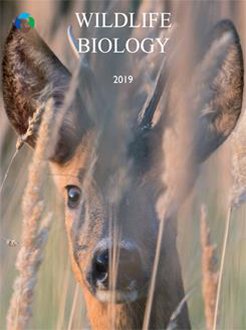Abundance estimators are often evaluated with simulations, or by comparing estimates to populations of known size. Advances in noninvasive genetic sampling have fueled an increase in the use of noninvasive genetic sampling-based capture–recapture. However, when working with free-ranging populations of unknown size, managers often lack data necessary to select the appropriate estimator. This leads to uncertainty regarding how choice of estimator or sampling design influence estimates, and managers may select estimators based on funding or logistical constraints. Alternatively, comparing estimates from multiple estimators can provide managers with greater confidence in estimates, or highlight potential differences. We used noninvasive genetic sampling to estimate the abundance of free-ranging kit foxes Vulpes macrotis and coyotes Canis latrans. We generated estimates of abundance with two non-spatial likelihood-based estimators: 1) robust design Huggins capture–recapture models and 2) single-occasion capture with replacement (CAPWIRE) models. We compared these with recently published estimates derived from spatially explicit capture–recapture (SECR) models. For both species, estimates from Huggins models were generally lower than those from SECR. Abundance estimates from CAPWIRE, which was developed specifically for noninvasive genetic sampling and generates estimates from a single sampling occasion, tended to be biased low with high precision. Our results suggest that choice of estimator and sampling design can significantly influence estimates, and that the relationship between estimators varied between species. Our results further suggest that single-occasion sampling often employed with CAPWIRE abundance estimation may produce biased results and be inappropriate for species requiring dispersed sampling strategies.
How to translate text using browser tools
8 July 2019
Empirical comparisons of abundance estimators for two sympatric carnivores using noninvasive genetic sampling
Robert C. Lonsinger,
Paul M. Lukacs,
Eric M. Gese,
Lisette P. Waits

Wildlife Biology
Vol. 2019 • No. 1
2019
Vol. 2019 • No. 1
2019
abundance
Canis latrans
capture–recapture
Capwire
noninvasive genetic sampling
Vulpes macrotis





